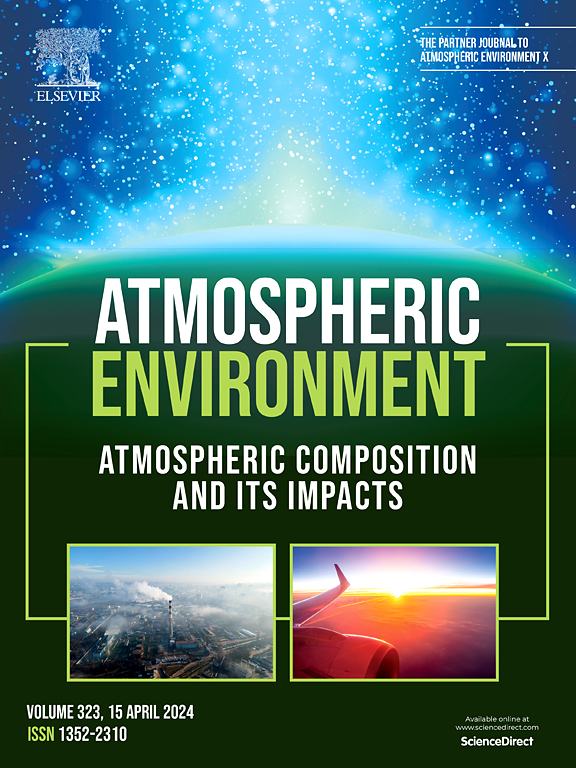Mass flow analysis of tire-wear particles, including carbon black, and implications for road dust management
IF 4.2
2区 环境科学与生态学
Q2 ENVIRONMENTAL SCIENCES
引用次数: 0
Abstract
Representative non-exhaust emissions from automobiles and tire-wear particles (TWPs) accumulate in road dust, causing their dispersion into the surrounding environment. TWPs undergo fragmentation due to continuous abrasion and weathering, resulting in the release of carbon black (CB), a major component of tire rubber. Although previous studies have conducted mass flow analyses (MFAs) for TWPs based on vehicle and road types, a detailed MFA specifically addressing road dust, including CB-bound TWPs, has not been performed. In this study, annual emissions of TWPs, including CB, from road dust were estimated based on different vehicle and road types. Mass flow diagrams were constructed to illustrate the distribution of these particles across technical and environmental compartments for each road type. The environmental mass of TWPs, including CB, in each compartment was calculated based on sewage system type, runoff ratio, road cleaning efficacy, and UV exposure. The MFA results indicate that highways contribute significantly to TWP exposure in soil and air, despite a substantial portion of TWPs also accumulating as road residue. Additionally, the endpoint mass flow of the environmental media (4241 t/a to air, 3140 t/a to water bodies, 20,602 t/a to soil, 3044 t/a to landfill, and 12,712 t/a to road residue) and the predicted environmental concentration values (1.16 μg/m3 in air, 0.37 mg/L in water, and 1824 mg/kg in soil) were consistent with literature ranges, supporting the reliability of the findings. These results underscore the importance of targeted road dust management strategies to mitigate the environmental impact of non-exhaust emissions.

包括炭黑在内的轮胎磨损颗粒的质量流分析及其对道路粉尘管理的影响
具有代表性的汽车非废气排放和轮胎磨损颗粒(TWPs)在道路粉尘中积累,导致其扩散到周围环境中。twp由于持续的磨损和风化而破碎,导致炭黑(CB)的释放,炭黑是轮胎橡胶的主要成分。虽然以前的研究已经根据车辆和道路类型对twp进行了质量流量分析(MFA),但尚未进行详细的MFA,专门针对道路粉尘,包括cb绑定twp。在本研究中,根据不同的车辆和道路类型,估算了道路扬尘产生的TWPs(包括CB)的年排放量。构建了质量流图来说明这些颗粒在每种道路类型的技术和环境隔间中的分布。根据污水系统类型、径流比、道路清洁效果和紫外线照射,计算每个隔间twp(包括CB)的环境质量。MFA结果表明,公路对土壤和空气中的TWP暴露有显著贡献,尽管相当一部分TWP也以道路残留物的形式积累。此外,环境介质的终点质量流量(空气4241 t/a,水体3140 t/a,土壤20602 t/a,填埋场3044 t/a,道路残渣12712 t/a)和预测环境浓度值(空气1.16 μg/m3,水0.37 mg/L,土壤1824 mg/kg)与文献范围一致,支持了研究结果的可靠性。这些结果强调了有针对性的道路粉尘管理策略对于减轻非废气排放对环境的影响的重要性。
本文章由计算机程序翻译,如有差异,请以英文原文为准。
求助全文
约1分钟内获得全文
求助全文
来源期刊

Atmospheric Environment
环境科学-环境科学
CiteScore
9.40
自引率
8.00%
发文量
458
审稿时长
53 days
期刊介绍:
Atmospheric Environment has an open access mirror journal Atmospheric Environment: X, sharing the same aims and scope, editorial team, submission system and rigorous peer review.
Atmospheric Environment is the international journal for scientists in different disciplines related to atmospheric composition and its impacts. The journal publishes scientific articles with atmospheric relevance of emissions and depositions of gaseous and particulate compounds, chemical processes and physical effects in the atmosphere, as well as impacts of the changing atmospheric composition on human health, air quality, climate change, and ecosystems.
 求助内容:
求助内容: 应助结果提醒方式:
应助结果提醒方式:


